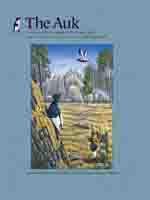Energy gain is thought to play a central role in prey selection by most foragers, but it may conflict with food theft avoidance and be constrained by undeveloped foraging skills. We investigated predation by the Glaucous-winged Gull (Larus glaucescens) on the ecologically important Ochre Sea Star (Pisaster ochraceus). We tested the hypothesis that Pisaster size selection by gulls was based on energetic profitability, defined as energy provided per unit handling time. We then examined the degree to which profitability interacts with intraspecific kleptoparasitism risk and age-related foraging efficiency (i.e., energy intake rate, prey capture success) to produce the patterns of prey choice observed in a natural setting. Behavioral observations of free-living gulls revealed moderate to high (32.5–91.6%) occurrences of Pisaster in gull diets. We used handling time data and bomb calorimetry to determine the relationship between Pisaster size and energetic profitability, which informed prey offer experiments that allowed us to test hypotheses regarding gull prey choice. We found that gulls readily distinguished between Pisaster sizes on the basis of energetic profitability, selecting the most profitable individual in 60% of trials. Prey discrimination ability did not differ between gull age classes and thus did not contribute to the reported reduced foraging efficiency of juveniles. However, gulls exhibited a significant nonlinear decrease in preference for highly profitable Pisaster with increasing kleptoparasitism risk.
How to translate text using browser tools
1 October 2011
Energy Intake, Kleptoparasitism Risk, and Prey Choice by Glaucous-Winged Gulls (Larus glaucescens) Foraging on Sea Stars
Justin P. Suraci,
Lawrence M. Dill
ACCESS THE FULL ARTICLE

The Auk
Vol. 128 • No. 4
October 2011
Vol. 128 • No. 4
October 2011
age-related foraging efficiency
foraging behavior
Glaucous-winged Gull
intraspecific kleptoparasitism
Larus glaucescens
Pisaster ochraceus
prey choice decisions




